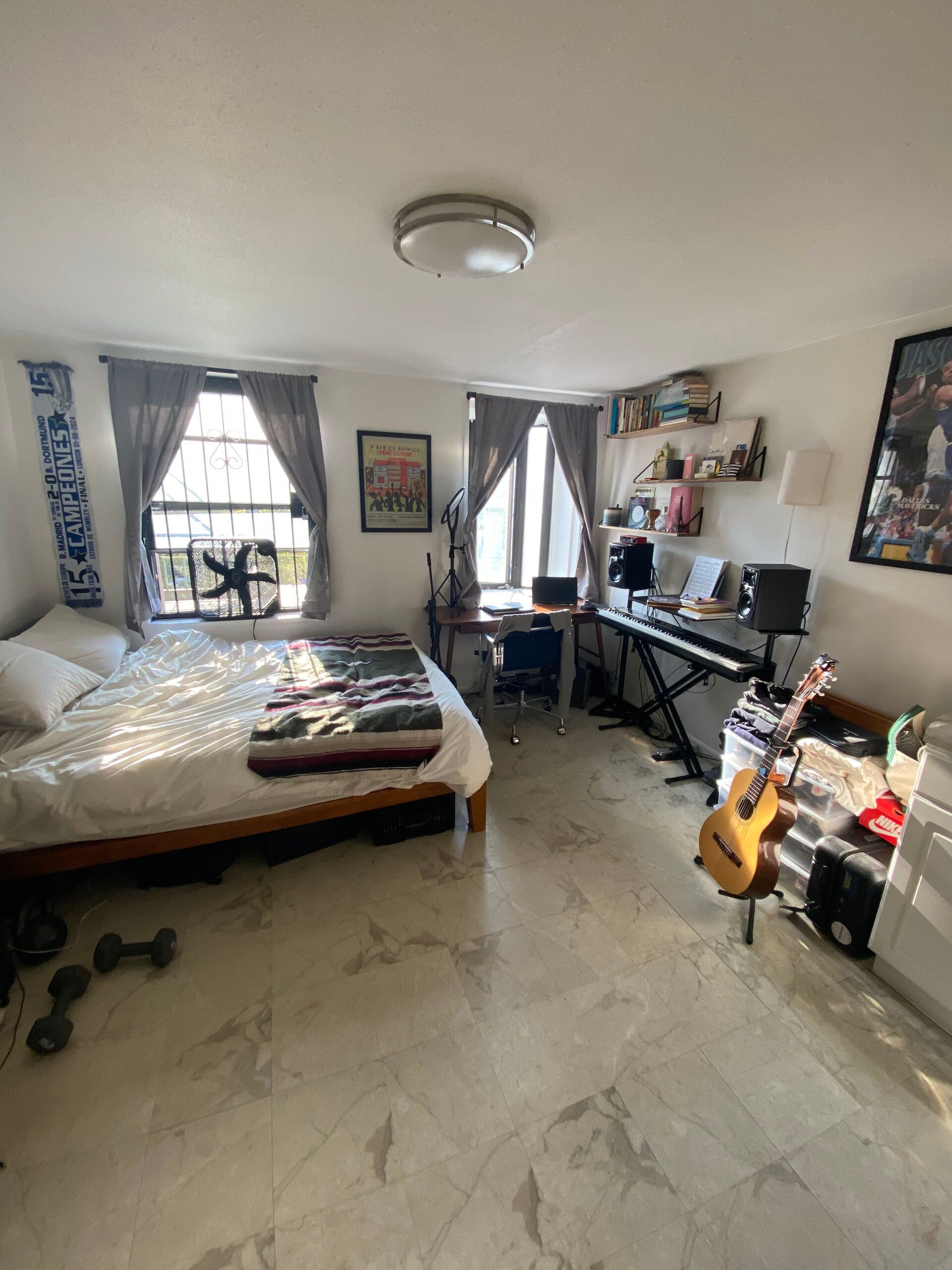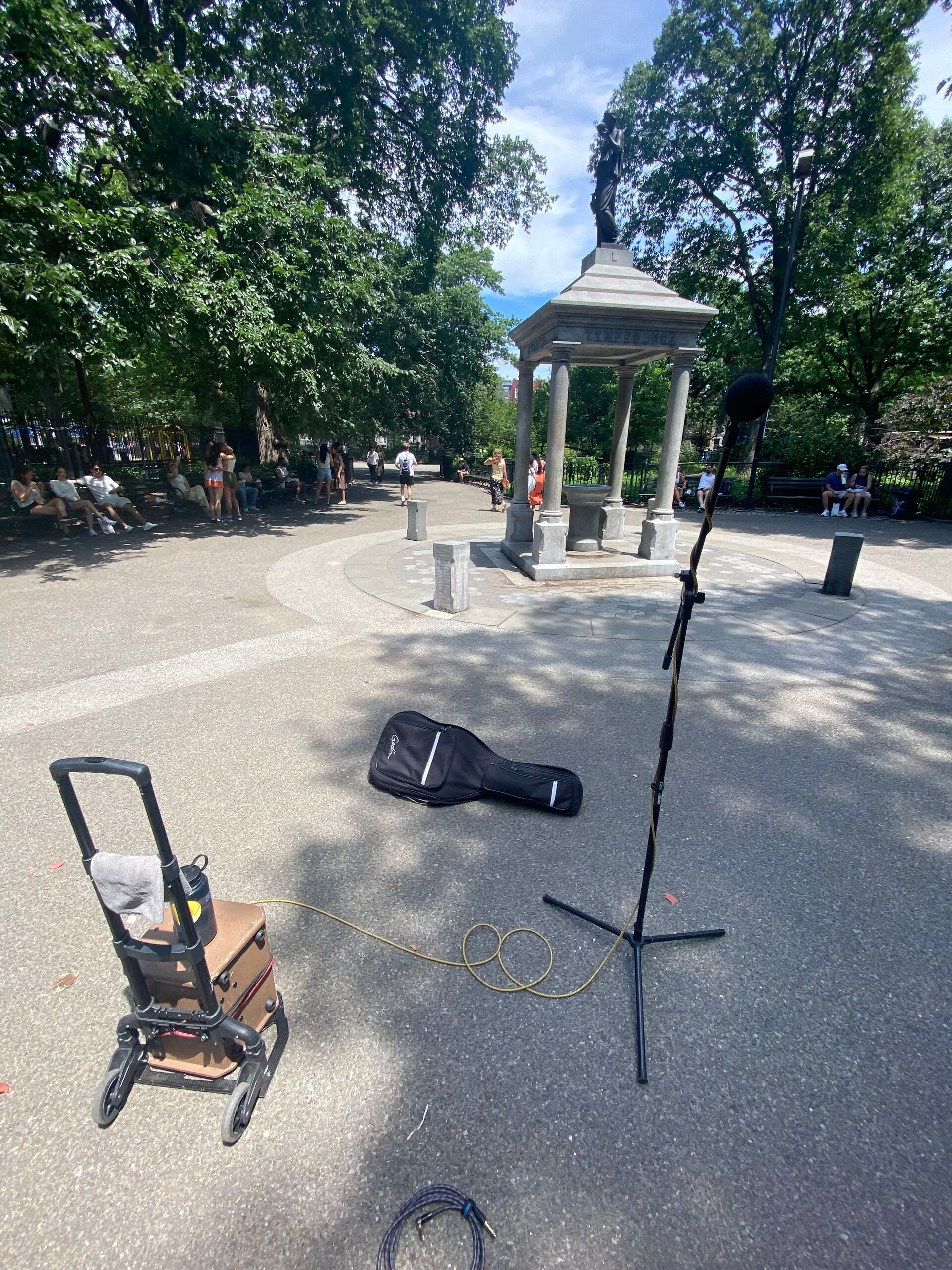- fred's garden
- Posts
- the places we listen
the places we listen

I’m in the market for a new chair.
this new seat (or set of two, for company) will fill the functional gap between my bed and desk chair. neither allows for passive engagement: to relax with a hazy half-focus, playing guitar, reading, or just hanging out.
it must also be collapsible to fit in the last sliver of space in my apartment: a small alcove behind my shoeboxes next to the kitchen cabinets. price is a factor, and a compelling aesthetic may be aspirational but a man can dream. I welcome all inquiries.
surfacing this need recently at C&B on the southeast corner of tompkins square, an acquaintance (Sasha!) suggested a larger theme of experiential space: the places we listen. taken, I began to reflect.
C&B, an excellent setting for people-watching and casual social interaction, hosts a jazz trio every sunday—such a day was this. sitting, I noted the sunlight bouncing off the café windows and the shuffle of passers-by; but as usual, my ears kept directing my attention back to the band.
the trio, a light and cohesive group, plays within a familiar tradition that balances easily between foreground and background. it plants a stake in the nearby park’s larger soundscape—walk close enough, and the hint of music and chatter will draw you even closer.*
for the cafe’s clientele, the sound provides sublime license for truer motives: socializing, a light caffeine buzz, or to just sit in sunday dress and be admired. the atmospheric cover allows the eyes to wander.
*this interplay, coincidentally, fuels my love of busking in tompkins: playing music in a public space creates the same structured yet invigorating randomness between performer and listener.
I take in the world around me primarily through my ears; visual cues have always proved tougher for me to decipher, and indeed my hearing has at times been a crutch for me to generate meaning. thus, it’s also become one of my greatest assets.

how much of what you see here is designed to produce sound?
my deepest listening takes place in my apartment—from ongoing practice and repetition (guitar, piano), to composition and production (studio monitors, headphones), to passive consumption (monitors, bluetooth speaker).
indoors, the expanse of C&B collapses into utilitarian constraints; my apartment must double as living room, studio, and kitchen. listening is functional and cherished but designed to catalyze growth. it doesn’t provide relief—a constant refrain of the apartment-locked city-dweller.
all artistic pursuits in new york city are limited to some degree by space, and thus in turn by cost. for music, this takes the form of the studio, the locus of creation, or the venue, the locus of experience.
for millennia, music operated inside natural limits: community size, location, cultural tradition—systems that forced intimacy, locality, and scarcity.
in the earlier part of the 20th century, the advent of electricity irrevocably transformed the experience of music by allowing, for the first time, its recording and reproduction at scale.
this newfound production capacity—especially when paired with the post WWII U.S. economic boom and subsequent cultural expansion—allowed for the creation of segmented audience markets that capitalized on evolving conceptions of identity and class to drive consumption.
for a time it worked: more people heard more music than ever. But this victory over scarcity gradually hollowed out all connective tissue between participants. if music is a language, we monetized the words faster than we could learn to speak them.

Ramona and the Holy Smokes album release party—sept 2025
as recordings flooded the market, abundance eroded the structures that had sustained music for thousands of years. songs became cheap and plentiful as the shared spaces that gave them life—dance halls, clubs, neighborhood bars—grew more fragile.
first itunes, then streaming, severed music from its scarcity altogether. listening was flattened: solitary, compressed into headphones and steered by algorithms.
venues were left to absorb the impact. the math no longer worked. too many musicians, too many songs, too few stages, and too little money circulating to hold it all together.
the collective act of music shifted to serve only the personal experience: DJs, requests, and bands finding more success playing covers at weddings and corporate parties than they ever could through their original music.
in trying to transcend music’s natural limits—space, cost, locality—we dismantled the connective system that had bound communities together for millennia.
and so we yearn to rediscover the humanity that once defined music. how many concerts do you see that promise an intimate, living room–like experience? where are the community centers for us to gather and connect spiritually?
thus the return to nature, or to tompkins. a fountain of vibrancy anchoring the concrete jungle to more ancient ways of being—not only to play but to listen, to locate myself in the rhythms of others in a sea of ordinary sound.

here we go again
other updates
ty ty ty for all the love on my Beatles reaction video! two new videos are live: Rubén Blades and the Talking Heads. like, comment, and subscribe!
not much else—I’m on v-a-c-a-tion for a few days relaxing in the blue ridge foothills and teaching myself jazz harmony. who could ask for anything more?
talk soon!
